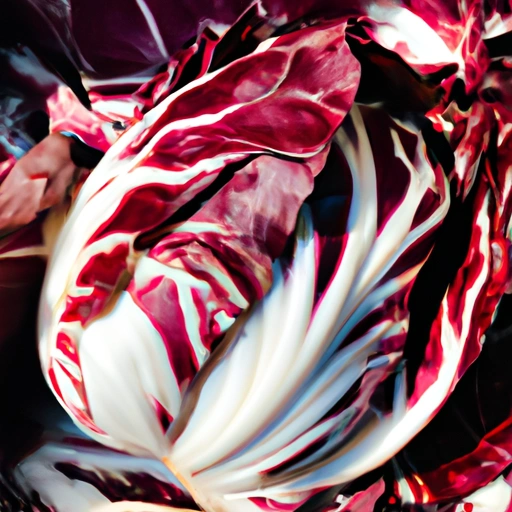Radicchio
Description

Radicchio, also known as Italian chicory, is a type of leaf chicory featuring beautiful maroon, white-veined leaves that boast a bitter and spicy taste. Often confused with red cabbage due to its appearance, radicchio has unique flavor characteristics and is a staple in Italian cuisine, though its popularity has spread across the globe.
Common uses
Radicchio is commonly used as a fresh salad ingredient, grilled or roasted for a warm dish, or incorporated into risottos and pastas. It adds both a splash of color and a complex flavor profile to various dishes.
Nutritional value
Calories
Radicchio is low in calories, with one cup (40 grams) containing approximately 9.2 calories (38.5 kilojoules).
Protein
It provides 0.6 grams of protein per cup (40 grams).
Fat
This leafy vegetable contains a negligible amount of fat, with only 0.1 grams per cup (40 grams).
Carbohydrates
Radicchio contains about 1.8 grams of carbohydrates per cup (40 grams), including dietary fiber.
Vitamins
It is a good source of vitamin K, providing about 128% of the Recommended Daily Intake (RDI) per 100 grams, and also contains vitamin C and some B vitamins.
Minerals
Radicchio offers minerals such as potassium, iron, and zinc.
Health benefits
Due to its high vitamin K content, radicchio may support bone health, and its antioxidants can help combat oxidative stress. Additionally, the fiber in radicchio promotes digestive health.
Potential risks
For individuals on blood-thinning medication, the high vitamin K content may affect treatment. As with any food, there is also a risk of allergic reaction for some individuals.
Common recipes
Radicchio can be found in a variety of recipes such as Radicchio salad with balsamic vinaigrette, Radicchio risotto, and Warm radicchio and pancetta wraps.
Cooking methods
This leafy vegetable can be eaten raw, grilled, roasted, sautéed, or braised, which can mitigate its natural bitterness.
Pairing with other ingredients
Radicchio pairs well with ingredients like balsamic vinegar, olive oil, citrus fruits, nuts, soft cheeses, and rich meats such as pancetta or sausage.
Summary
Radicchio, a leafy vegetable with a rich history and diverse culinary applications, is not only prized for its vibrant appearance and distinct taste but also for its nutritional benefits. It can be prepared in myriad ways to complement various international dishes and is a delightful addition to any meal.